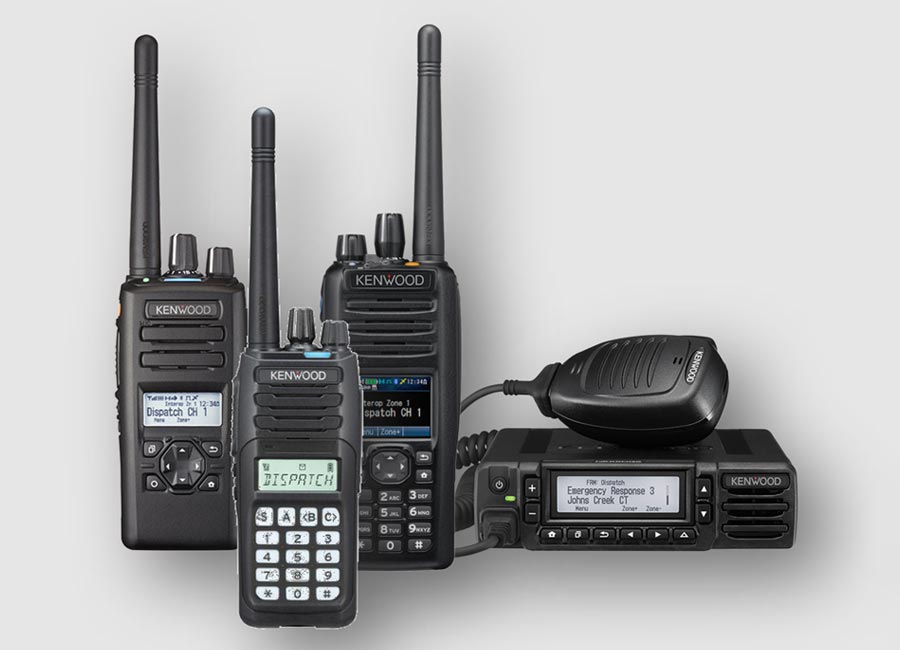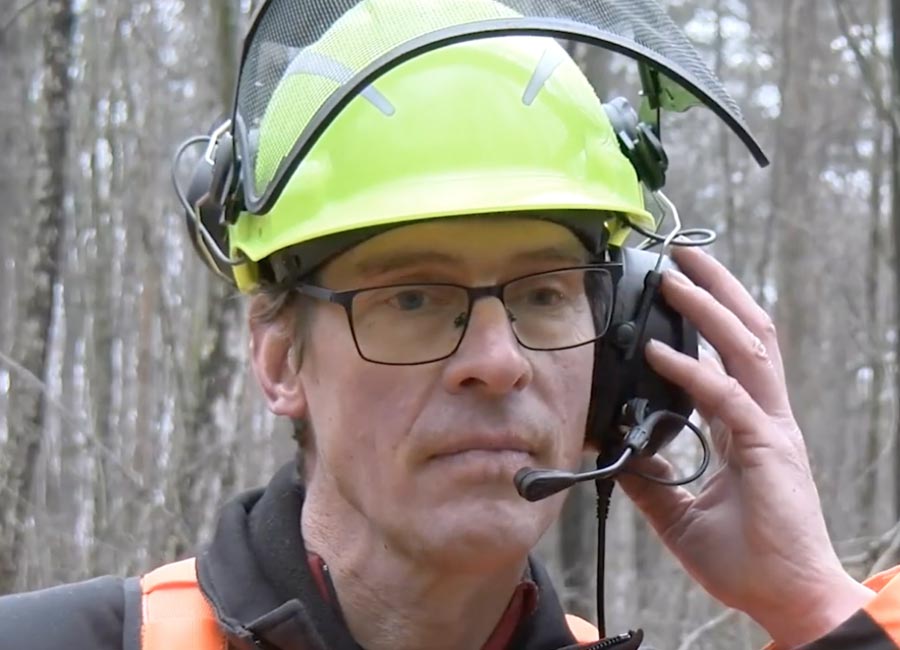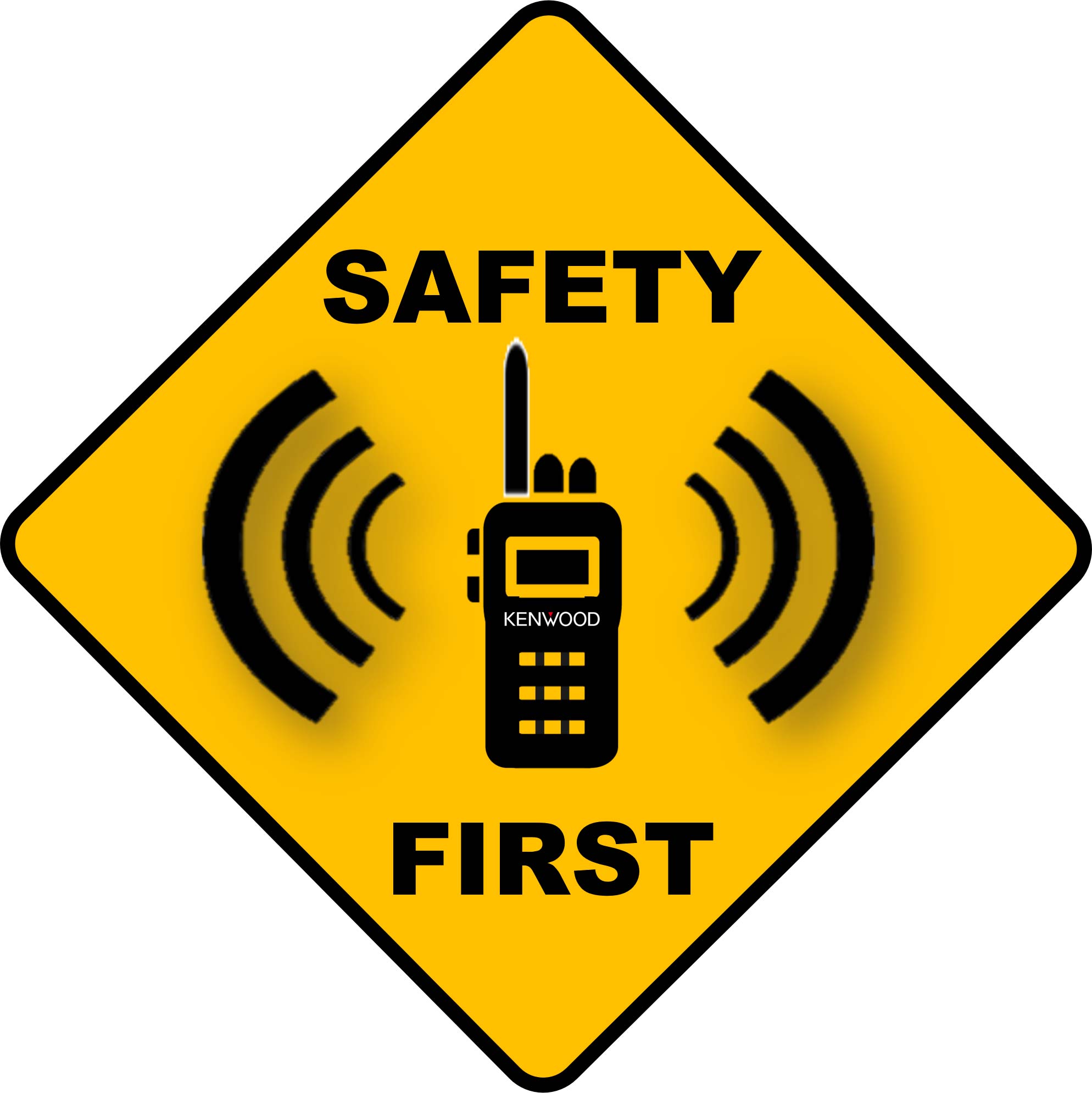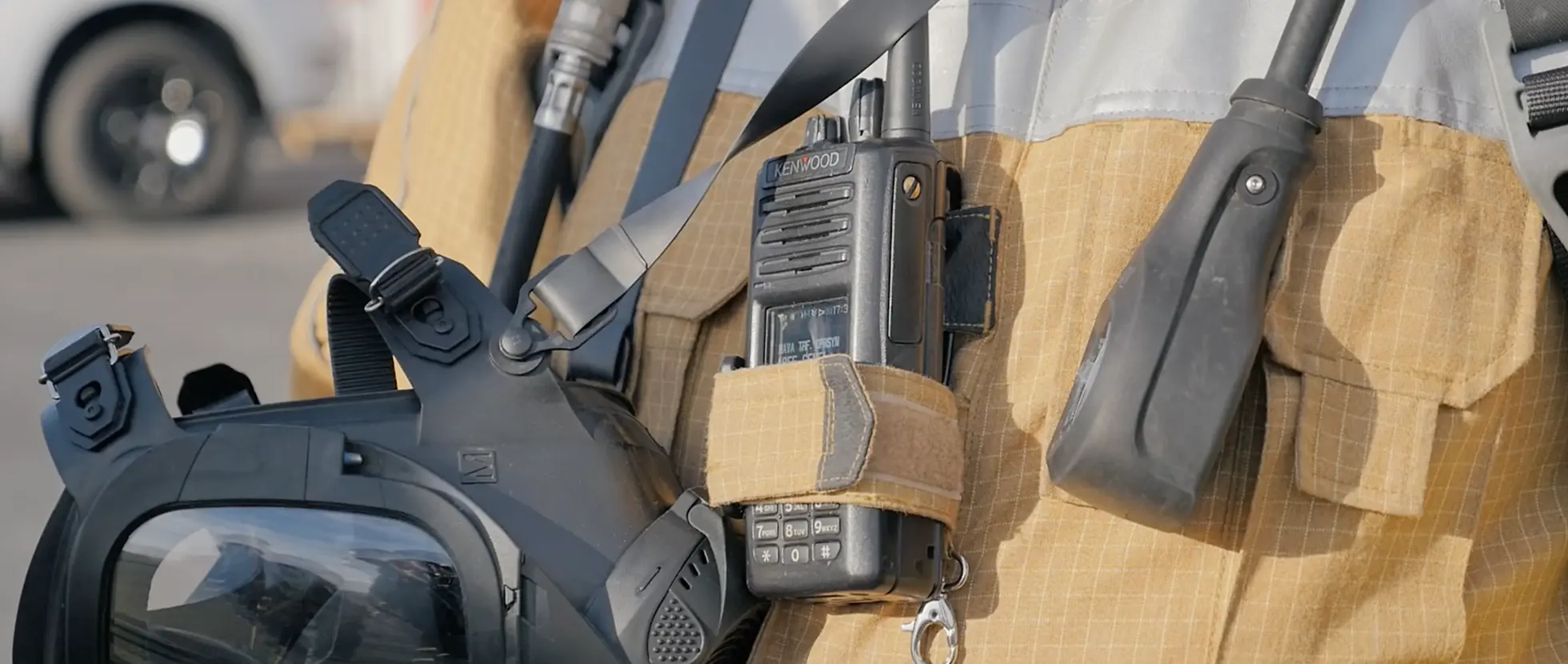Increased productivity, safety and security in farming operations

From modest smallholdings to mega-farms covering millions of acres, the agricultural industry feeds the world—and with the population projected to exceed 9.7 billion by 2050, its importance will only continue to grow.
Agriculture is the single largest employer globally, with 40% of the global population working in the industry. While the trend to consolidation in larger farms continues, the 500 million small, family farms worldwide still provide up to 80 per cent of the food consumed.
According to the Food and Agriculture Organisation of the United Nations, food production will need to increase by 70 per cent from 2007 to feed the larger population. The additional challenge is to achieve that growth without a proportionate increase in greenhouse gas emissions.
With the adoption of technology, automation and more stringent health and safety practices, farming has become more productive and safer. Still, it remains at its heart one of the most dangerous occupations undertaken by dedicated people, carrying out physically demanding work over long hours and in all weather conditions.
A rewarding but hazardous working environment
Farming presents risks to workers that can threaten their lives. Heavy machinery, exposure to chemicals, slippery and uneven ground, extreme weather, and the unpredictability of animals are some of the hazards that come with the job.
Most common risks
Most injuries on farms occur while workers lift, push, or pull and adjust or repair machinery. Injuries sustained while operating or attributed to the use of tractors, for example, account for some 300 fatalities each year. With the drive for greater productivity and greater mechanisation, farm managers are looking for solutions that will support more vigorous safety procedures for workers.
|
|
- Accidents caused by tractor operations
- Crush injuries while operating/maintaining machinery
- Slips and trips on the same level
- Falls from a height
|
- Being struck by a moving or falling object
- Animal-related injuries
- Toxic chemical exposure
- Contact with high-voltage power lines
|
RADIOCOMMUNICATION SUPPORTING SAFETY FOR FARMWORKERS
One critical area in which radiocommunication can support increased productivity and worker safety is providing the instant communication needed to ensure workers and machinery are in the right place at the right time, and that help is close to hand in the event of an accident.
Despite the ubiquity of smartphones and the use of tablets in farming, two-way radio communication remains the optimum communication tool of first and last resort, continuing to work even in the event of cellular or ISP network service outages.
Which radiocommunication technology is best for your farm?

With farms having to be run with the efficiency more commonly found in streamlined manufacturing industries, data collection plays an increasingly important role in farm management, and there is a greater dependency on automation and technology.
The average farm in the EU covers some 16 hectares; however, over 60% are under 5 hectares. So when it comes to radio communications, it’s essential to consider a system that suits the size of your farm operation, the number of users, the topography of the area to be covered and the intended use today and in the future.
Buy cheap, buy twice (or more)
As with virtually any electronic device, there are always cheaper alternatives to tested and proven professional equipment.
With tight margins in farming, cutting corners and shaving costs is tempting. For example, you can buy a multi-pack of consumer PMR446 walkie-talkies from a supermarket, catalogue store or even a toy shop for a little more than a sack of feed. While they might work, they are not designed to survive the rough and tumble of farming activities, usage in all weather conditions (and with gloved hands), or last a long day’s work without needing to be charged or without needing to replace the batteries.
A license-free or licensed two-way radio is a critical piece of equipment. It allows farm management to coordinate operations carried out by workers, often working alone and out of sight, reliably and clearly at the push of a button to optimise efficiency and safety. This is especially important when circumstances change or in the event of an incident requiring assistance, so it pays to invest in the right kit for the job.
Typical applications include:
|
|
- Safety of lone workers
- Incident reporting
- Locating workers
- Workflow management
- Monitor and log the workforce
|
- Supervision of seasonal workers
- Monitoring equipment and vulnerable access points
- Coordinating supplies
- Evaluating efficiency
- Safety, security and implementation of emergency plans
|
PROVEN PERFORMANCE
Instant communication between individuals and groups in voice and data across large areas.
The use of KENWOOD two-way radio communication to coordinate workflow and safety in the agricultural sector is widespread. It provides the ability to deliver clear voice and data transmissions to workers located within a single site or across widely spread spaces to prioritise work, respond to situations, manage emergency procedures, maximise the efficient use of resources, and improve safety, security, and productivity.
Solutions range from the simplicity of license-free digital dPMR446 walkie-talkies to highly flexible, voice and data-enabled digital conventional, IP networked and trunked DMR and NEXEDGE NXDN communications systems. The utility of this can be significantly extended with the addition of applications and software suites, which include dispatch and location capabilities, automated and event-triggered audio and text alerts, and real-time asset tracking and monitoring.
ProTalk License-Free PMR446 – simple and effective
The simplicity and convenience of analogue and digital license-free PMR446 technology have made it a popular choice in farming operations. Its reliability, ruggedness and ease of use have provided instant communication between individuals and groups at the push of a button.
KENWOOD ProTalk professional PMR446 is particularly suited for use within farm buildings and across open spaces on smaller farms or where channels are allocated to specific teams; it offers:
|
|
- Compact hand-portable format
- PMR446: 16-analogue channels
- dPMR446: 32-digital channels, 16-analogue channels
- Built-In Voice Scrambler
- Construction to US MIL-STD Specification 810G
- IP54/55 rated
- Native analogue/digital modes of operation
- Programmable second PTT (dPMR446 models)
|
- 7-colour LED indicator illuminates to notify multi-status functions, including power-on and different unit identification (dPMR446 models)
- Simple to programme and use
- Long battery life between charges
- Rugged and durable radio devices
- Reliable and resilient RF coverage
- Supplied with battery, battery charger and belt clip
|
Digital dPMR446 is quickly becoming the most popular format with professional users. With 32 digital and 16 analogue channels, it offers better reception to the full extent of the coverage area. Durability, long battery life between charges, and simplicity of operation in all conditions are some of the key attributes of the current generation of KENWOOD ProTalk dPMR446 radios, along with many more advanced features only previously found in licensed radios.
KENWOOD licensed digital radio – the flexibility to meet the demands of more extensive and multiple sites
For larger single sites or communications to teams across multiple locations, a licensed KENWOOD DMR and NEXEDGE NXDN digital technologies bring even more significant benefits, including:
|
|
- Multi-protocol DMR/NXDN + FM Analogue options
- Native analogue/digital Mixed Mode operation
- Portable and in-vehicle formats
- Individual, group and ‘all radios’ calls
- Advanced built-in and programmable user safety functions, including lone-worker, man-down and emergency call
- Over-the-air programming
- Programmable automated alerts - Emergency / Evacuation / Lockdown alert functions
- Voice and data messages
|
- Optional and built-in GPS
- Longer range/improved coverage
- Encryption against interception and eavesdropping
- Flexibility to link multiple locations
- Scalable digital conventional, IP conventional and trunked operation
- Suite of application solutions to tailor a system to meet specific operational requirements
- Simple to programme and use
- Long battery life between charges
- Rugged and durable radio devices
- Reliable and resilient RF coverage
|
KENWOOD DMR and NEXEDGE NXDN digital protocols both offer the capability to build flexible and scalable systems. In contrast, the native analogue/digital Mixed Operation (enabling radios to communicate automatically with existing licensed analogue radios) provides a predictable, economical migration path to complete digital two-way radio implementation at an affordable cost and the basis to build a future-proof radio communications system.
 |
KENWOOD licensed DMR and NEXEDGE NXDN offer both hand-portable and in-vehicle devices that can be integrated with existing security systems, including fire and security, CCTV, access control, telemetering, etc. They provide a failsafe, scalable, and future-proofed communication solution.
An important point to note is that all KENWOOD digital radiocommunication devices feature native mixed-mode operation, allowing them to communicate automatically with existing analogue radios.
|
 |
KENWOOD DMR
The KENWOOD DMR range offers users comprehensive and cost-effective operations and business-critical digital two-way radio solutions employing 2-slot TDMA technology in an ETSI TS 102 361-1, 2, and 3 compliant format. Options include low, mid, and fully featured high-tier devices with and without GPS, keypads and displays, and DMR Tier III Trunked and Simulcast capabilities.
Find out more ►
|
 |
KENWOOD NXDN
With millions of devices in use, KENWOOD's ITU-R-accepted, spectrum-efficient NEXEDGE® NXDN™ Common Air Interface (CAI) is proven to deliver innovative, flexible, and spectrum-efficient digital conventional and trunked radio solutions that meet the demands of today's radio users alongside a multitude of advanced voice and data features.
Find out more ►
|
Advanced Worker Protection
 Farmworkers, including seasonal staff, can have their radios programmed and monitored so that they will be called automatically at predetermined times to check on their status. Should there be no response, an alarm will be raised. Similarly, a programmable function key on the radio can be assigned to trigger an emergency alert, which is transmitted immediately to all other radio users.
Farmworkers, including seasonal staff, can have their radios programmed and monitored so that they will be called automatically at predetermined times to check on their status. Should there be no response, an alarm will be raised. Similarly, a programmable function key on the radio can be assigned to trigger an emergency alert, which is transmitted immediately to all other radio users.
Radio communication is efficient for coordinating activities and improving productivity. It also helps you comply with health, safety, and security requirements/regulations, such as alerting workers to the presence of threats, calling for medical assistance, reporting accidents, suspicious activities, and intruders.
However, radio communication excels in the event of a significant incident, whether that be a medical emergency, a worker at risk or a more serious event that requires staff everywhere on-site to be alerted instantly and to initiate appropriate emergency procedures.
To reassure your workforce, all KENWOOD NEXEDGE NXDN and DMR models feature Emergency Key and Emergency Call features as standard. In contrast, more advanced models additionally offer built-in or optional GPS modules, such as Lone Worker and Emergency Advanced Motion Detection Function, which make them ideal for incorporating within a robust health and safety policy. Once programmed and activated, these advanced safety features can include:
| Priority Call: |
The Priority Call feature ensures the availability of a radio channel in an emergency and allows a control centre to interrupt all existing calls on a channel.
|
| Emergency Key: |
When the Emergency Key button is pressed, an alarm and the sender's user ID are triggered. GPS-equipped radios can also send the user's location (GPS coordinates).
|
| Lone Worker: |
If a user does not respond to a status prompt within a specified time, an alarm and the sender's user ID are triggered.
|
| Man Down: |
An alarm and the sender's user ID are triggered if the radio is tilted beyond a pre-determined angle, indicating that the user may have fallen or become incapacitated. Other programmable features include:
- Stationary Detection: Emergency mode is triggered along with the sender's user ID when the radio remains in a stationary position for a period exceeding a pre-set time, indicating that the user is unable to operate the transceiver or it has been lost, mislaid etc. GPS-equipped radios can additionally send the user's location (GPS coordinates) to the farm office using software such as KAS-10 and KAS-20 AVL and Dispatch suites.
- Motion Detection: Emergency mode is triggered along with the sender's user ID when the radio is vigorously shaken or swung for a period exceeding a pre-set time, indicating that the user is running to or from an incident. GPS-equipped radios can additionally send the user's location (GPS coordinates) to the farm office using software such as KAS-10 and KAS-20 AVL and Dispatch suites.
|
| Location Services: |
NEXEDGE NXDN and DMR radios equipped with GPS can additionally be programmed to send location information to the farm office using software such as KAS-10 or KAS-20 AVL and Dispatch suites, allowing the user at risk to be located quickly and response times to be reduced.
|
| Remote Monitor: |
Remote Monitor allows the farm office staff to listen to a radio through its microphone in situations where an alarm is activated and the radio user cannot respond. This provides the Farm Manager with the intelligence to assess a situation in real time and quickly initiate an appropriate response.
|
EXCEPTIONAL AUDIO QUALITY EVEN IN NOISY ENVIRONMENTS
KENWOOD radiocommunication devices benefit from JVCKENWOOD Group’s 60 years of experience in producing consumer audio and visual equipment (Trio, JVC and KENWOOD), renowned for exceptional sound quality
This transfer of knowledge and experience has led to the development of many novel and innovative solutions that overcome the problem of cancelling ambient noise while improving the audio clarity of the transmitted voice in any operating environment.
| Ultimate noise cancellation: |
NX-5000 Series hand-portable radios achieve optimum noise cancellation using two integrated microphones. The primary microphone is closer to the desired source (front of the radio), while a second microphone in the radio's rear receives the ambient noise. In a noisy environment, both microphones receive noise at a similar level; however, the primary microphone receives the user's voice more strongly. The processor in the radio subtracts one noise source from the other so that most of the ambient noise is cancelled, which effectively enhances the quality of the transmitted audio of the user's voice.
|
| Active Noise Reduction: |
Both the NX-5000 and NX-3000 Series radios feature Active Noise Reduction (ANR). ANR cancels the noise component of the collected audio to improve the transmitted audio quality. Noise cancellation functions can be 'Custom' configured to adjust the vocoder, DSP, filters, specific noises, etc., to suit the operating environment.
|
| Selectable Audio profiles: |
The received audio will sound different depending on the usage environment of the radio, characteristics of the device (such as the microphone to be combined with the radio and external devices), and the speaker's tone of voice and manner of speaking. The received audio will also sound different depending on the output method, such as using the radio speaker or earphones to hear the received audio. KENWOOD radios feature six customisable audio profiles which can be configured for specific scenarios and selected by the user to suit the operating environment.
|
BUILT TOUGH TO WITHSTAND RAIN, DIRT AND THE ROUGH AND TUMBLE OF DAILY USE
 Farmworkers and their radios work side by side in all conditions. Hence, it’s good to know that all Kenwood professional hand portable walkie talkies and mobile radios conform to MIL-STD-810 C/D/E/F/G for ruggedness and durability and are IP54/55/67 Water & Dust Intrusion rated, making them suited for use in the farming environment. In addition, KENWOOD can offer ATEX IECEx devices for use in hazardous, explosive atmospheres.
Farmworkers and their radios work side by side in all conditions. Hence, it’s good to know that all Kenwood professional hand portable walkie talkies and mobile radios conform to MIL-STD-810 C/D/E/F/G for ruggedness and durability and are IP54/55/67 Water & Dust Intrusion rated, making them suited for use in the farming environment. In addition, KENWOOD can offer ATEX IECEx devices for use in hazardous, explosive atmospheres.
EXPLORE KENWOOD SOLUTIONS FOR FARMING, HORTICULTURE, ANIMAL HUSBANDRY AND FORESTRY
KENWOOD equipment is used in the management of farming activities around the world. For example, the €300 million project by Al Dahra and the Serbian government to jointly develop 9,000 hectares of farmland to produce a range of crops, meat and dairy produce and the Public Access Mobile Radio (PAMR) network in Cape Town that numbers many farmers within its subscriber base. Read more about other users in sectors with operating characteristics similar to those in agriculture, including Forestry, Vineyards, Wildlife Parks and Construction.
Please click on the banners below to discover more about the millions of KENWOOD devices in use by countless customers in hundreds of applications around the world, including the innovative, multi-protocol NX-5000 Series (NXDN, DMR, P25 and FM Analogue), NX-3000 Series (NXDN, DMR and FM Analogue), and exceptional value offered by the entry-level NX-1000 Series hand-portable walkie-talkies and mobiles.
Click here for more information on KENWOOD digital system solutions, including DMR Tier 3 trunking and Simulcast, NXDN Type-C, Type-D, and Gen2 trunking.
Alternatively, please post an enquiry to us or contact an Authorised KENWOOD Communications reseller.
► Please complete our Enquiry Form or contact an Authorised reseller
for help with your project
QUICK LINKS
Please click the banners to explore your choice of technology and solution.







